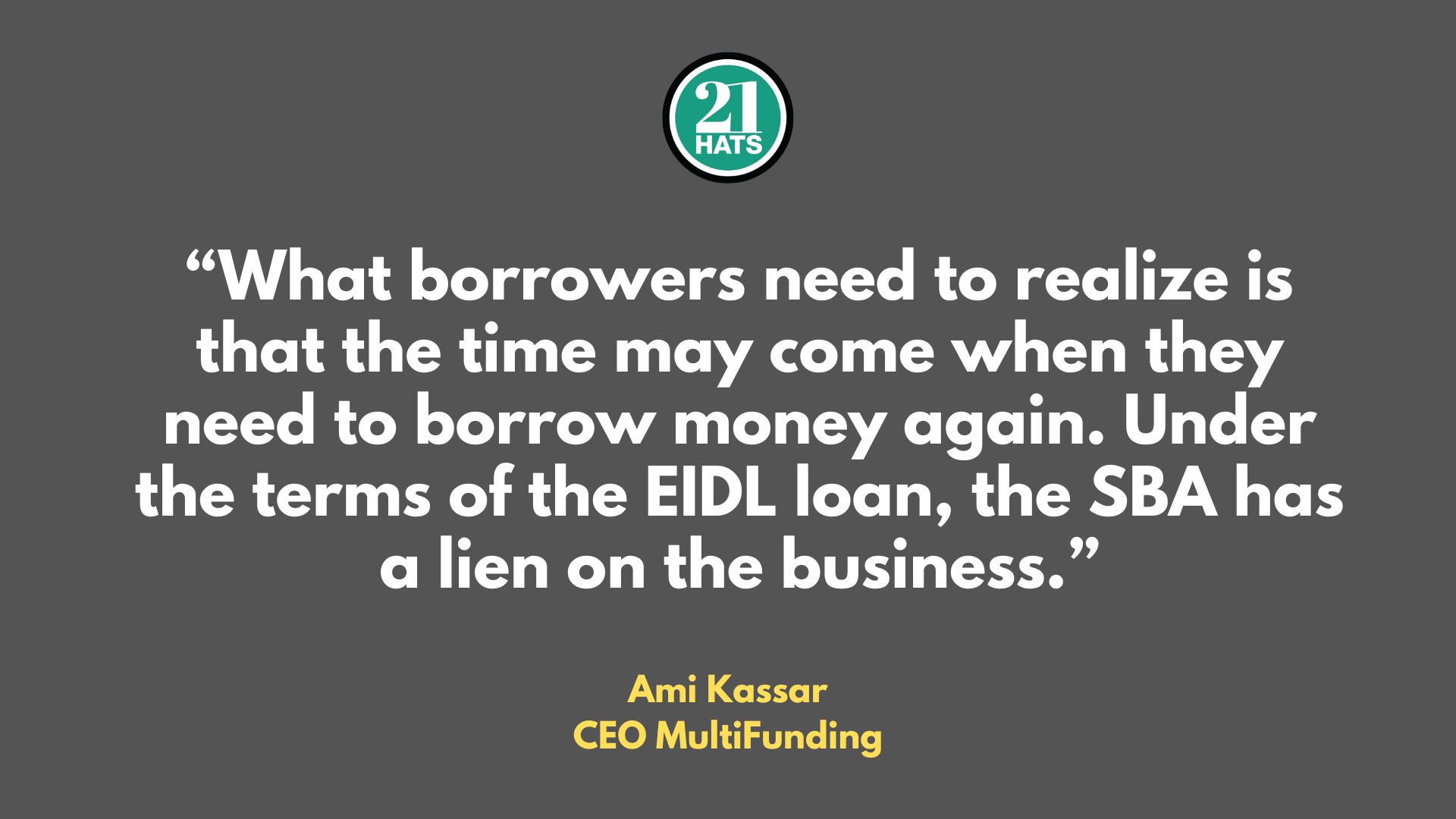Got an EIDL Loan? You Have to Manage It

There are some misconceptions about the SBA’s disaster loans, and as payments come due, those misconceptions can get you in trouble.
By Ami Kassar
Last month, the Wall Street Journal published an article titled “Pandemic Loans Are Coming Due But Some Businesses Aren’t Ready to Repay.” During the pandemic, the SBA issued about $390 billion in Economic Injury Disaster Loans to approximately 4 million small businesses. These were low-interest, 30-year loans with payments deferred for two years. As those payments come due, some business owners are arguing that they did not fully understand the terms of the loans and that as the economy weakens they are not well positioned to repay the loans. Business owners need to understand that these loans are an IOU to the U.S. government.
Unfortunately, the problems with the EIDL program are just beginning, and they could take decades to unwind. To understand the complexity of the issues, you have to look at the origins of the EIDL program and how the government tried to adapt it to cope with the pandemic. Long before Covid, the EIDL program was designed to assist businesses in a relatively small geographical area when they were damaged by a specific disaster. The government would step in to offer long-term, low-rate loans to help the businesses rebuild.
When Covid hit, the SBA had little idea what to do. There was no infrastructure to support a mass EIDL rollout across the country. And so they retrofitted the program for Covid and introduced it in stages. In the first round, the SBA offered loans up to $150,000 with minimal documentation requirements. And then, over time, they moved the loan amounts to $500,000 and eventually $2 million.
While it’s terrific that the government got 4 million loans out the door, the loans were issued without proof of economic injury. Yes, some businesses that got the loans were genuinely decimated by Covid and needed every penny. But many businesses actually thrived during Covid and jumped on these loans out of FOMO (fear of missing out). I have heard some crazy stories about how the money was used: including buying jets, paying off divorce settlements, and investing in cryptocurrency. And there were plenty of companies that were in terrible financial shape before Covid and saw these loans as an opportunity to refinance debt, stretch out terms, and take another shot at solving long-existing issues.
Despite explicit terms in the loan agreements about how the money could be used to recover from the pandemic, the reality is that the use of funds was and remains a free-for-all. The chances of ever being audited by the SBA are slim to none.
And now, payments are coming due, and some borrowers are crying foul. As the Wall Street Journal points out, some borrowers claim they thought EIDL loans, like the Paycheck Protection Program loans, wouldn’t have to be paid back. Other borrowers say they didn’t realize that interest would accrue on the loans while payments were deferred, which means the businesses now owe more money than they realized. Still others say that with a possible recession looming, their businesses are actually in worse shape today than when they took the disaster loans, and they are not prepared to make payments.
Respectfully, it’s time to start paying back the debt. Typical SBA loans amortize over 10 years at much higher rates than 30-year EIDL loans. Payments are relatively low, and borrowers cannot keep kicking the can down the road.
What borrowers need to realize is that the time may come when they need to borrow money again. If their business still has a balance on its EIDL loan, the day of reckoning will have arrived. Under the terms of the EIDL loan, the SBA has a lien on the business, and the new lender will require the SBA to subordinate that lien before issuing a new loan. The first line of questioning will come from the new lender: What did you do with your EIDL money? Did you use it for authorized purposes? If not, that will raise a character issue that could endanger the new loan. If you do get through these questions, next up will be the SBA officer who has to approve the subordination request.
My advice to those with an EIDL loan is to make a plan. If you used the money for legitimate purposes and your business was hit hard by Covid, you don’t have much to worry about. But if that’s not the case, clean up your balance sheet and be prepared for the next time you might need to borrow money. By all means, start to make those payments.
Ami Kassar is co-founder of MultiFunding.